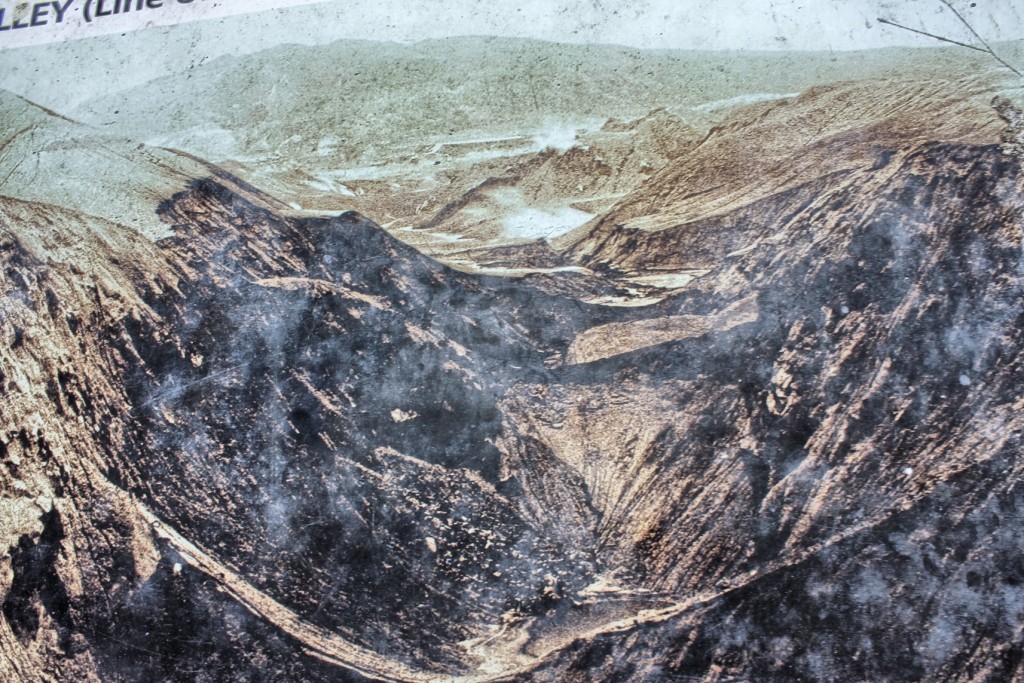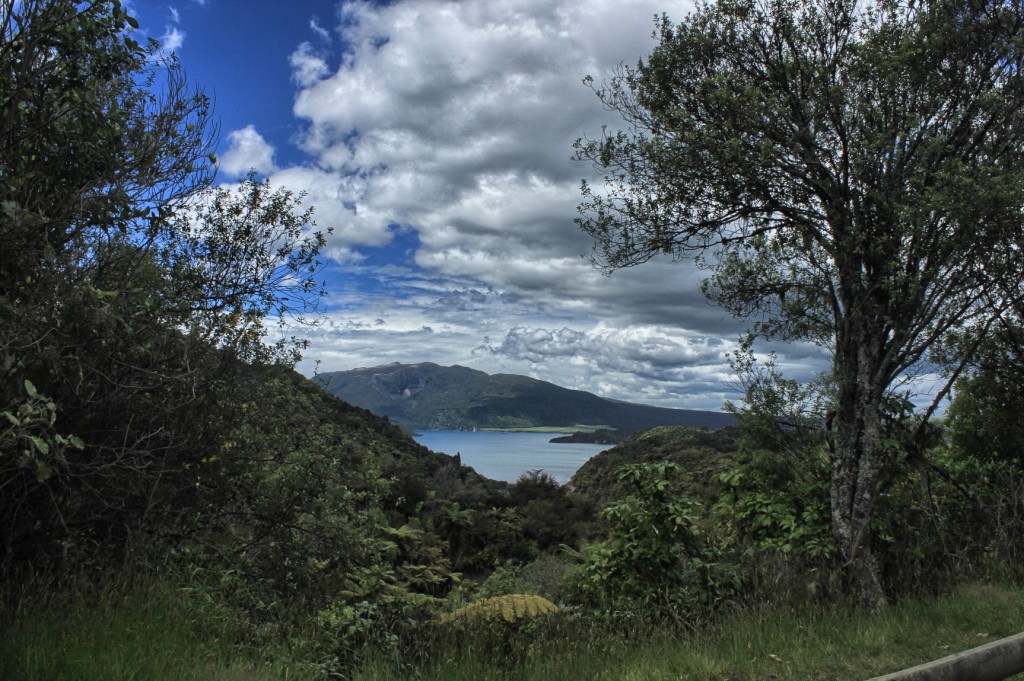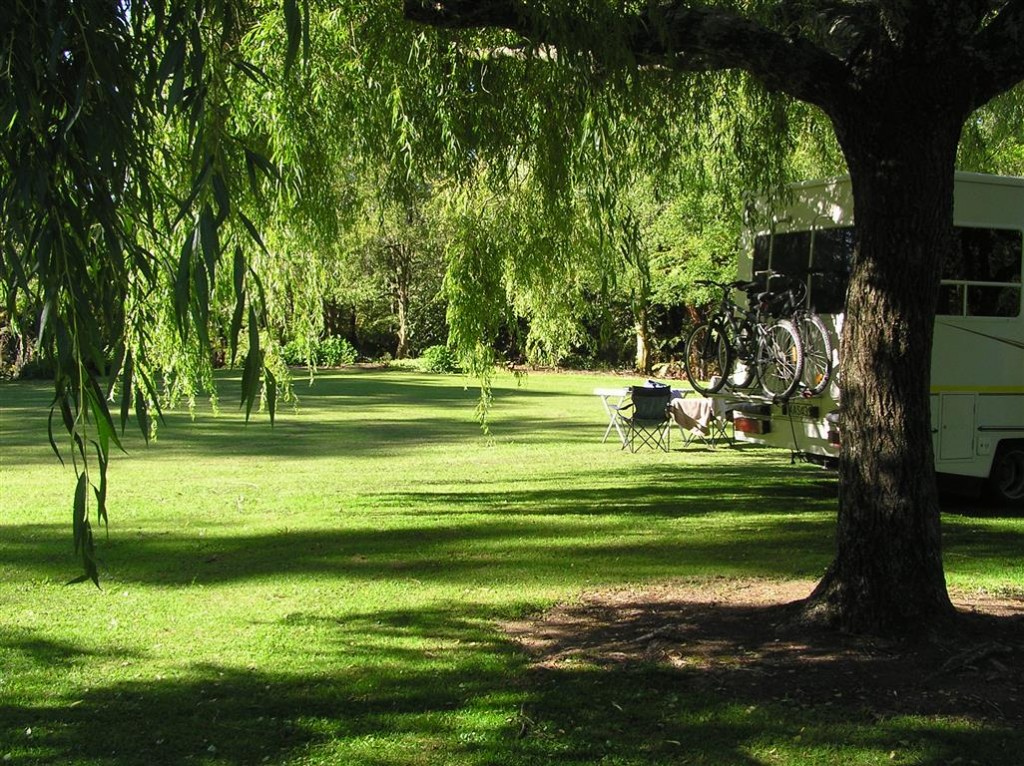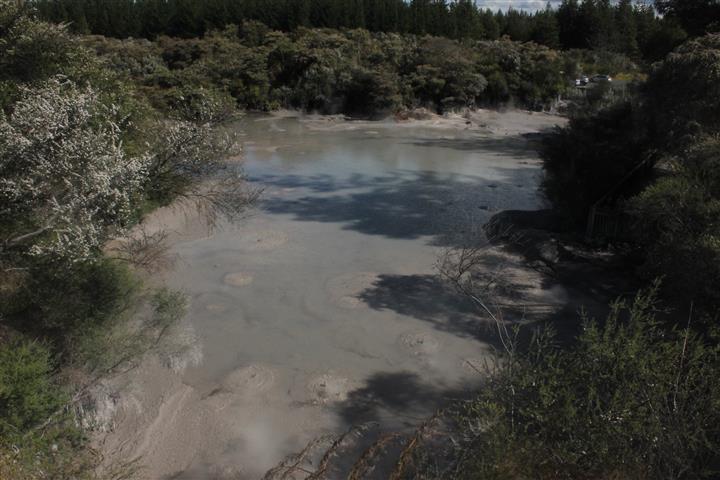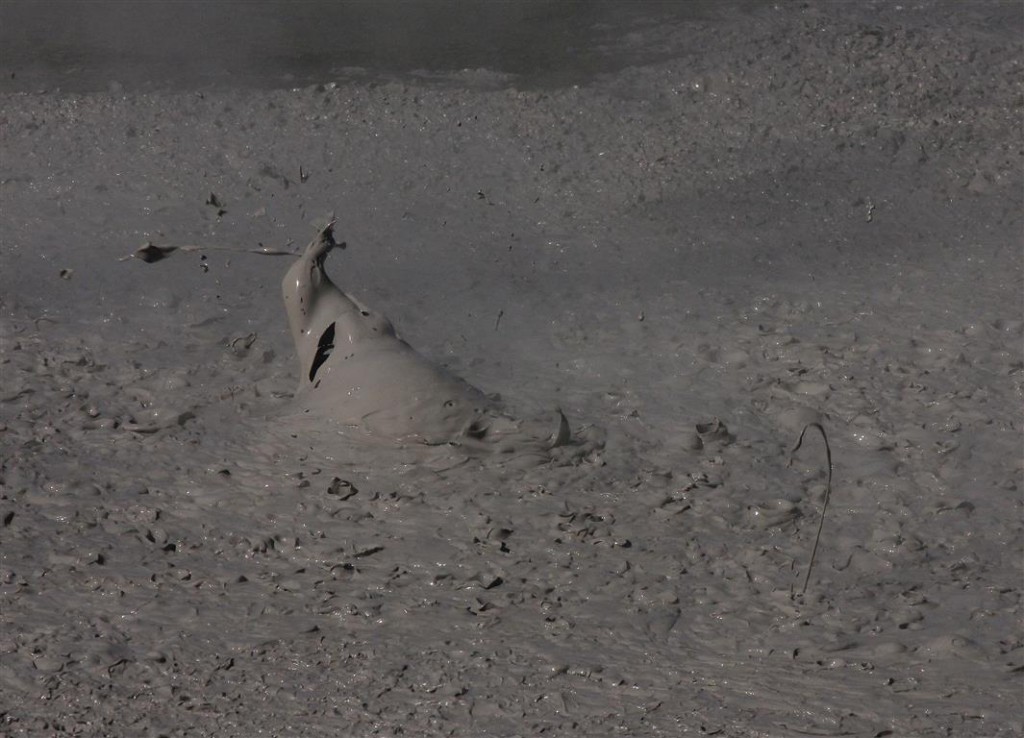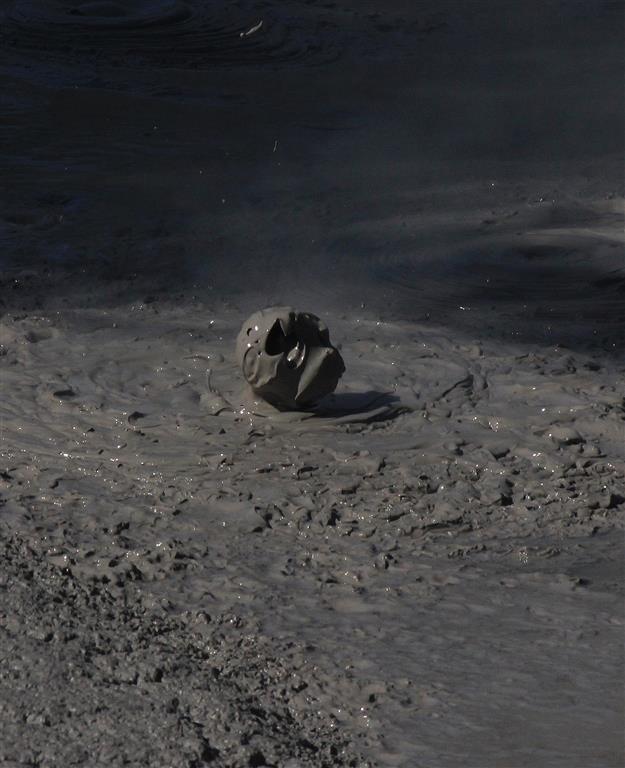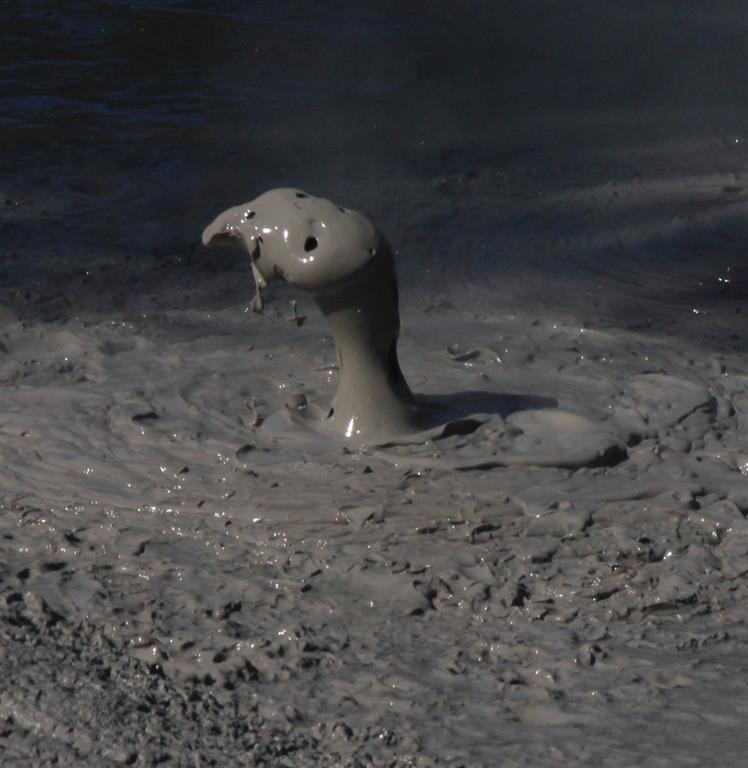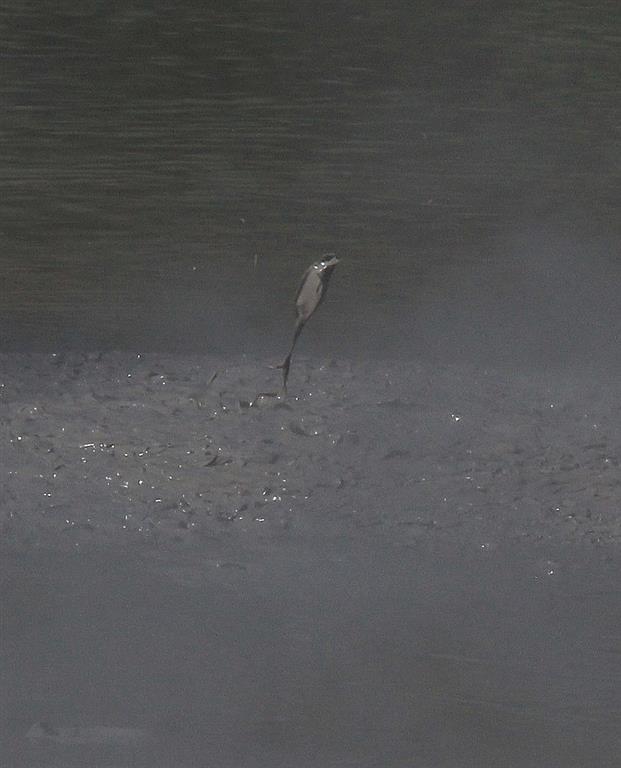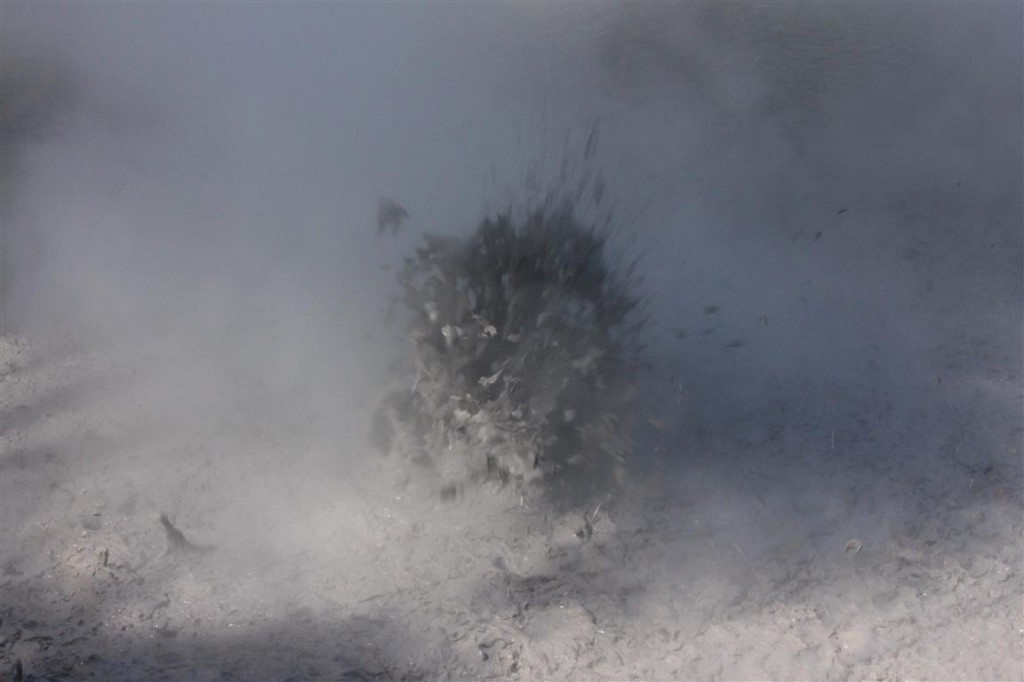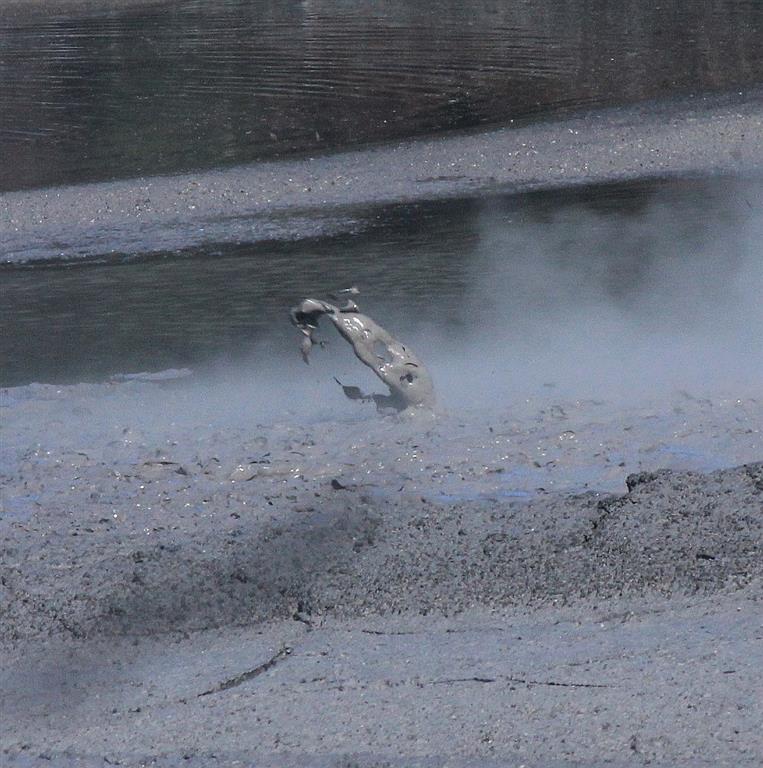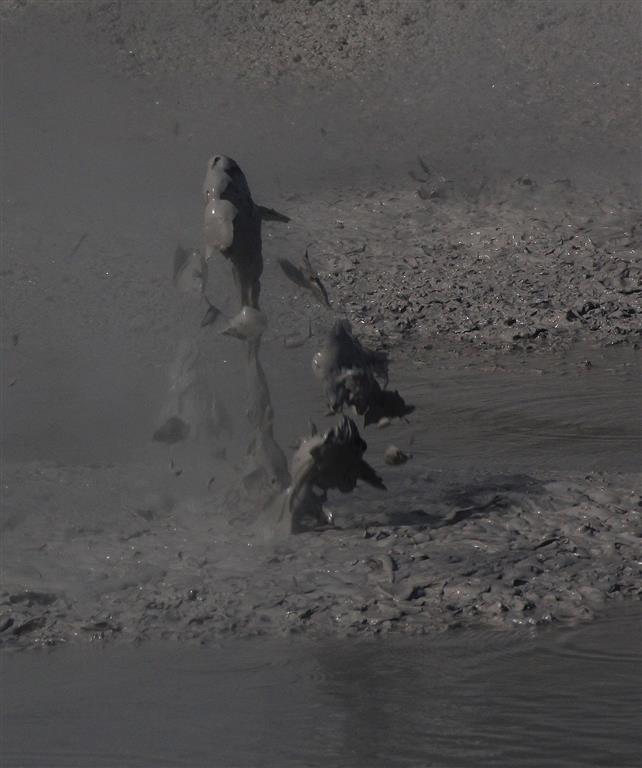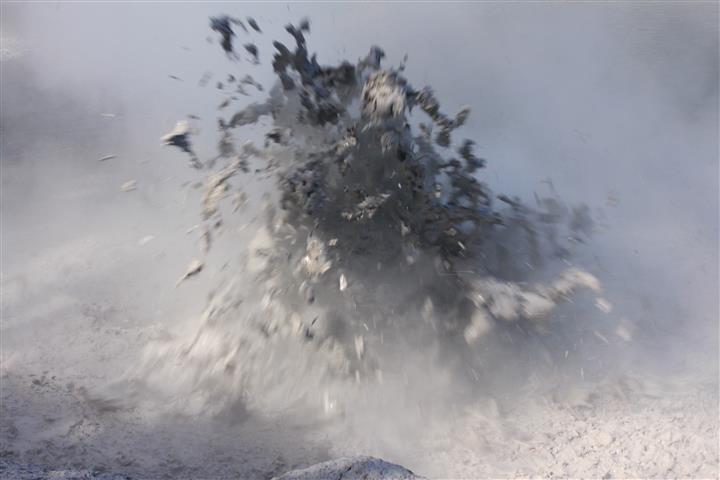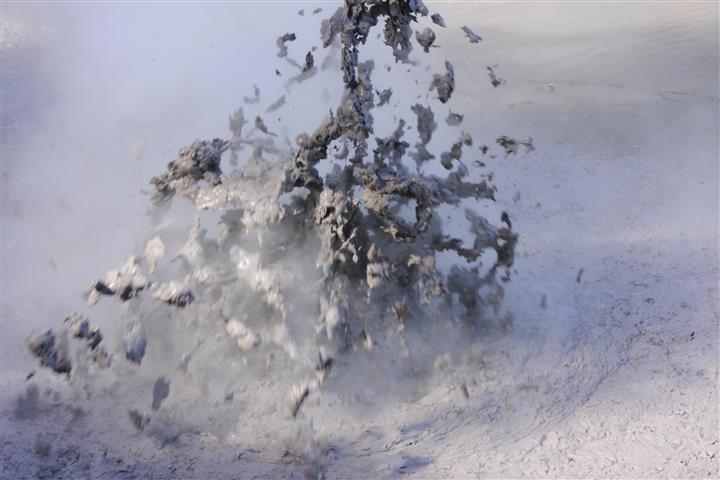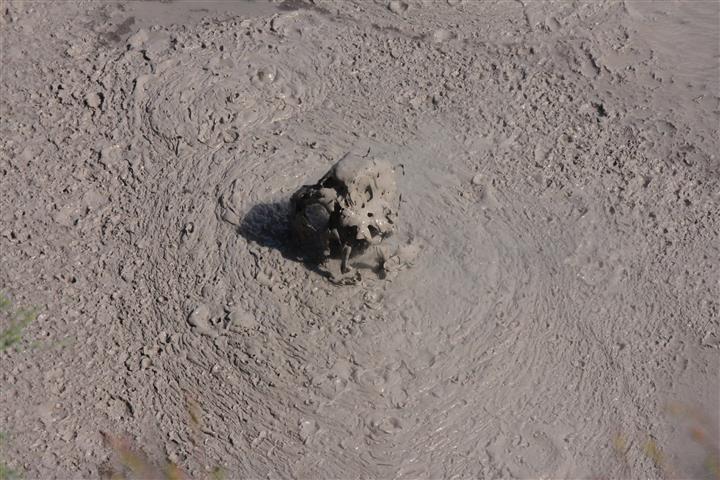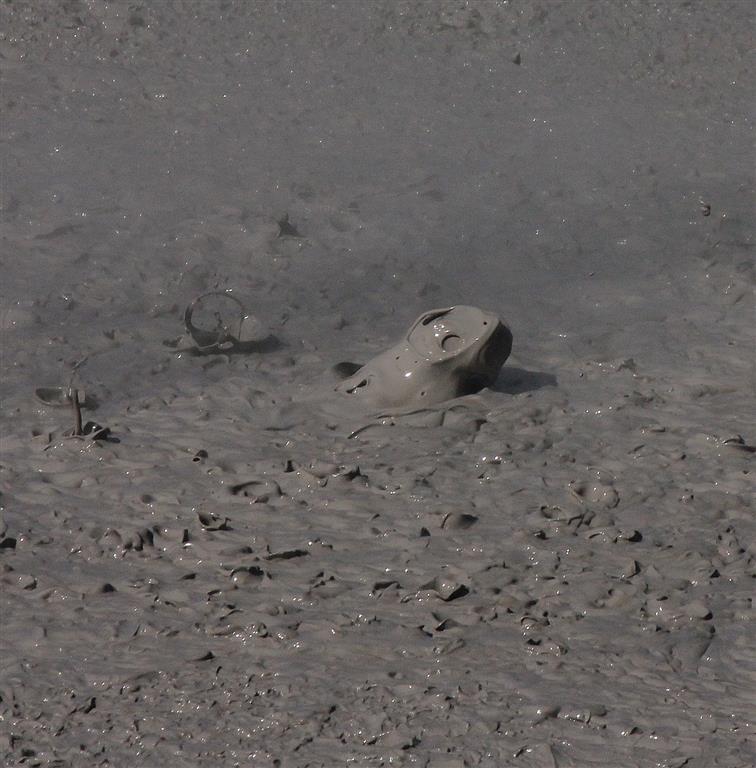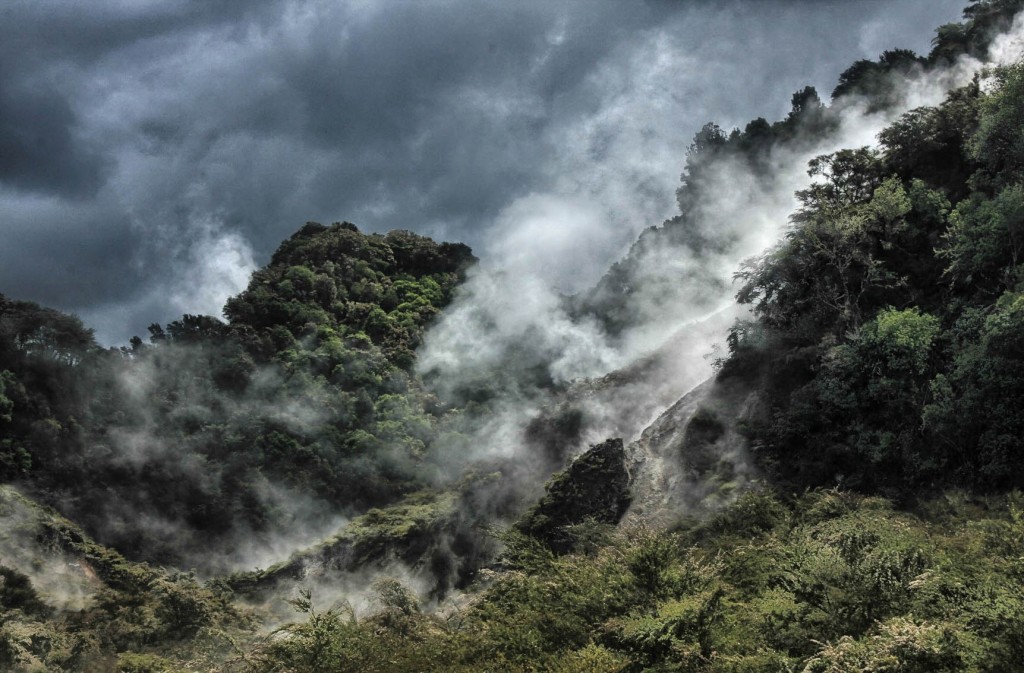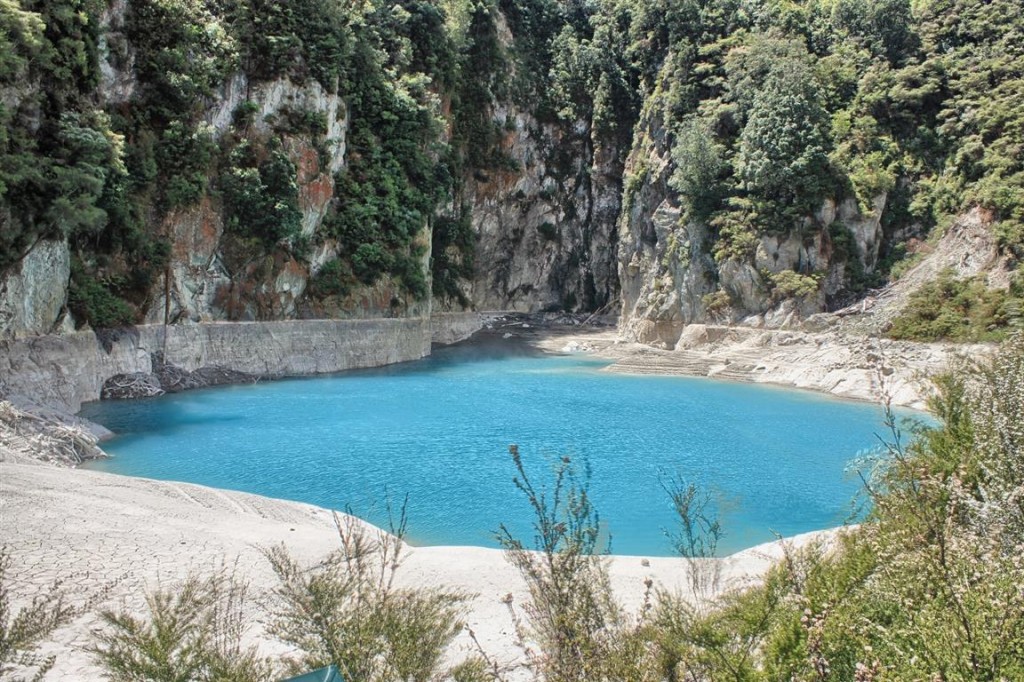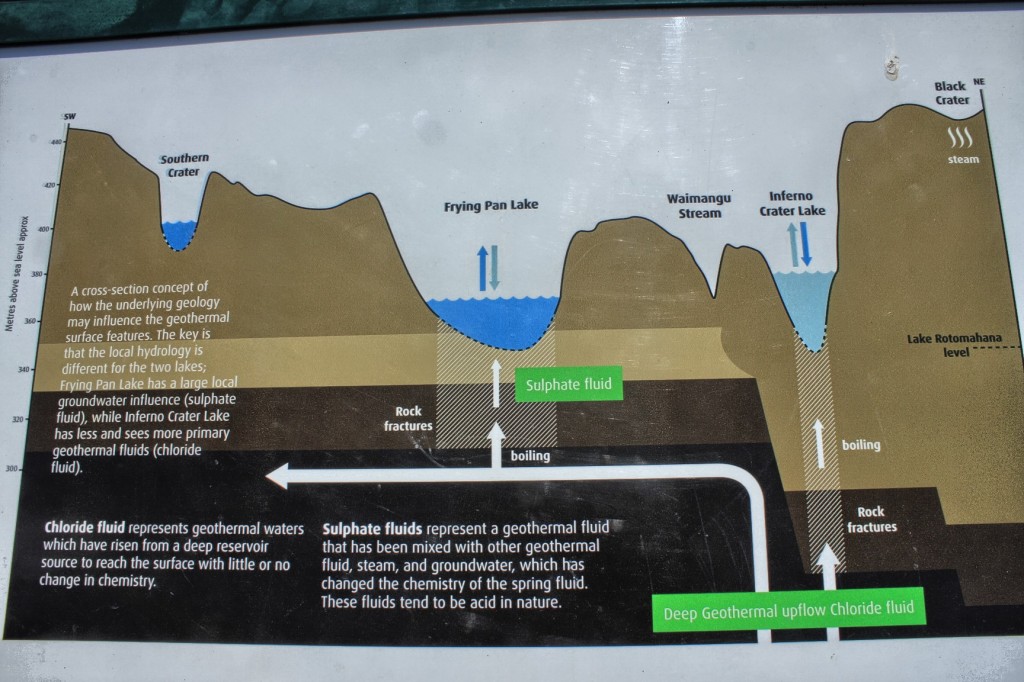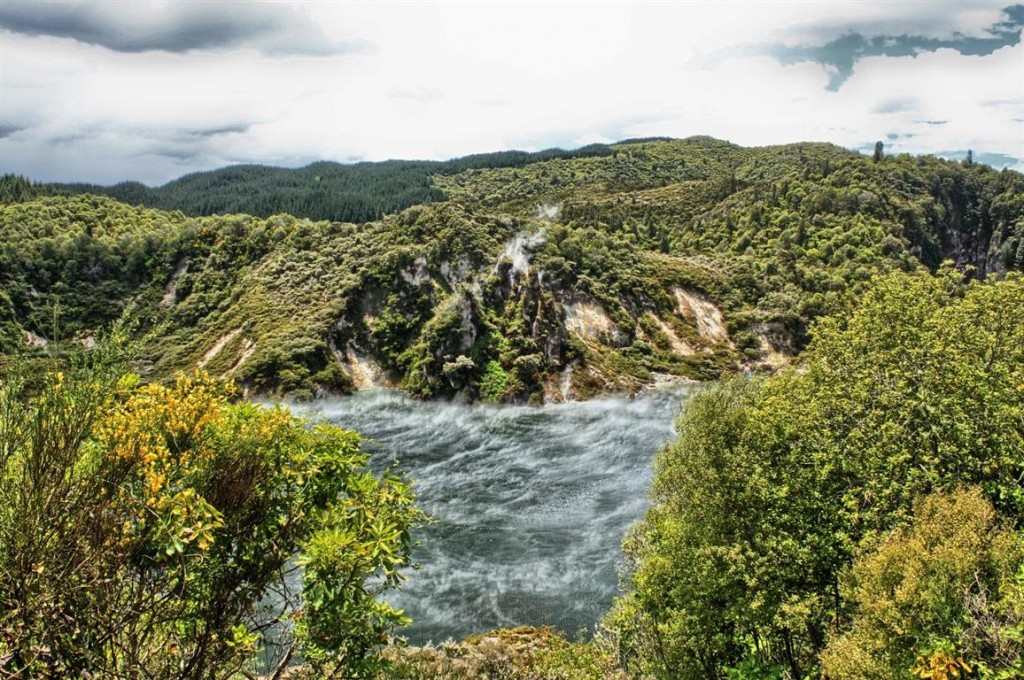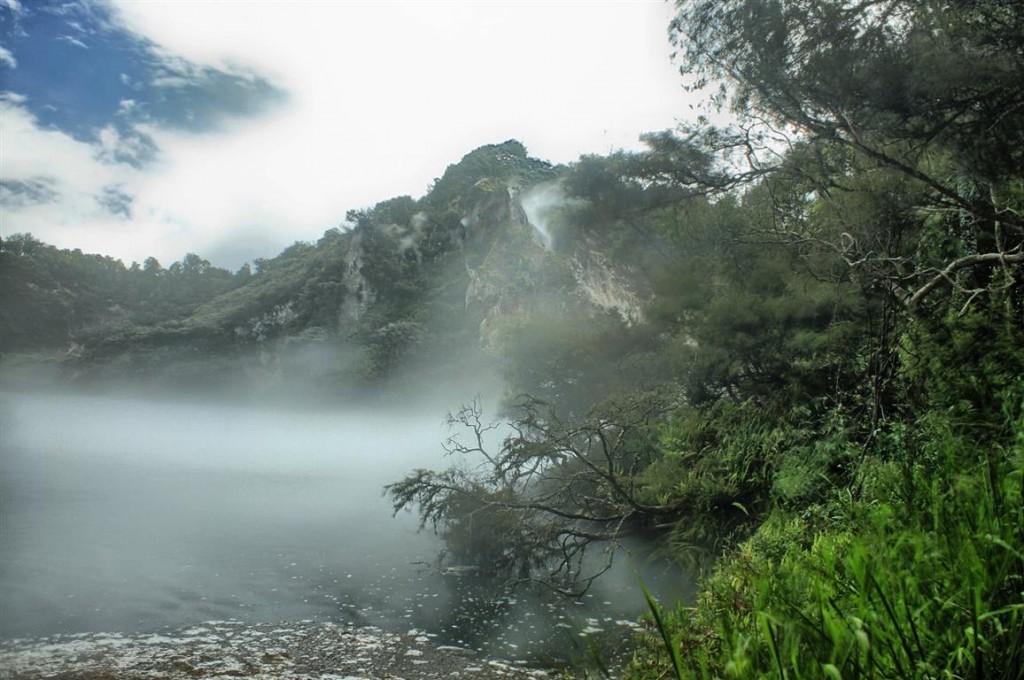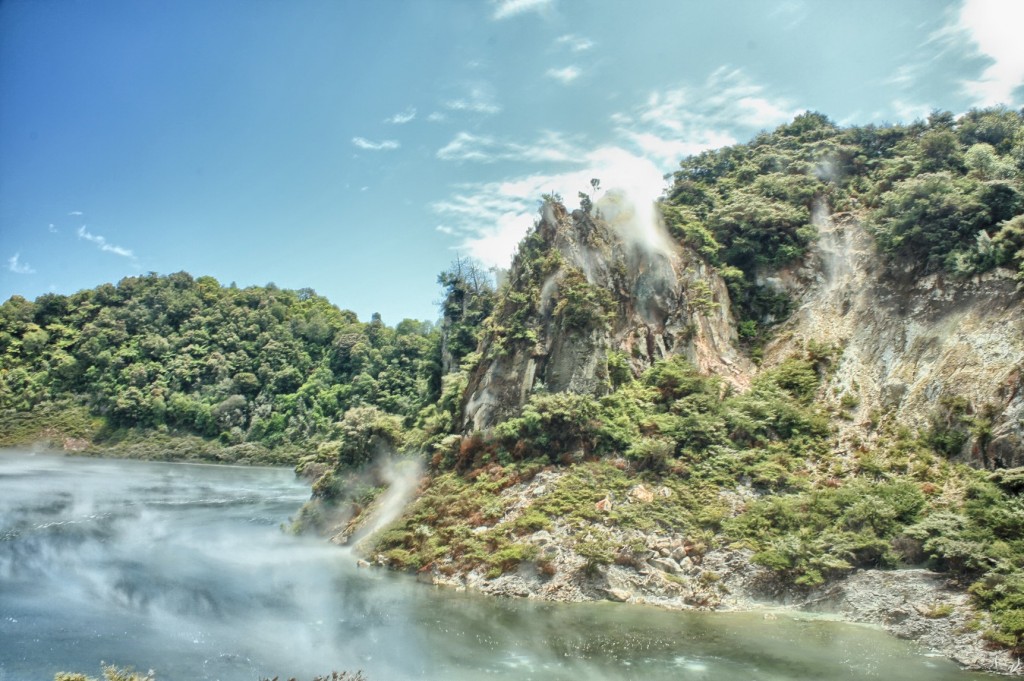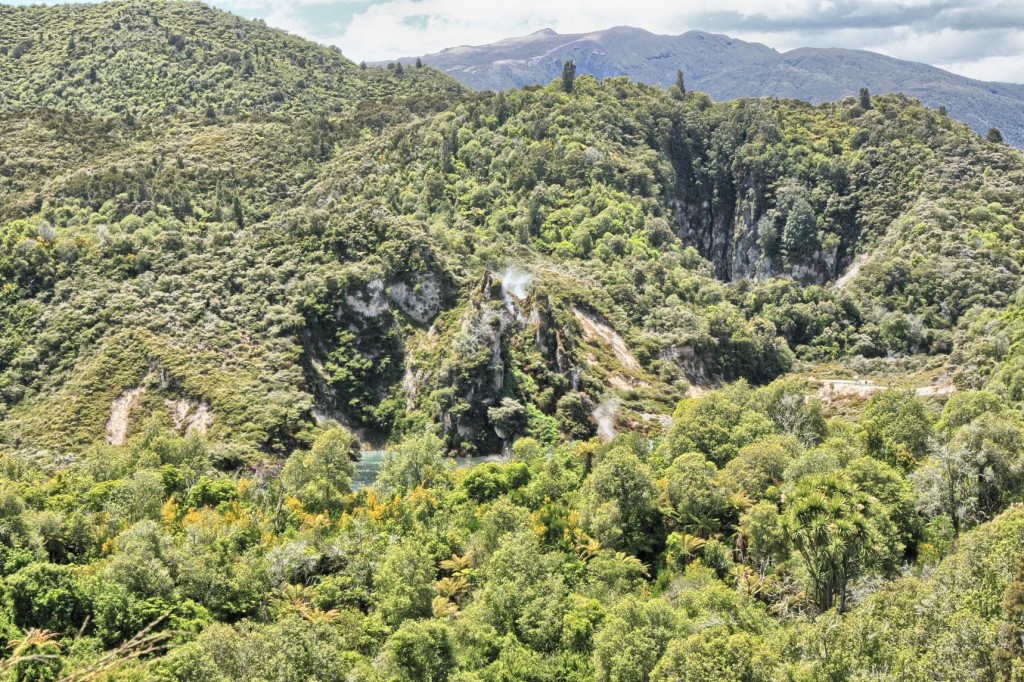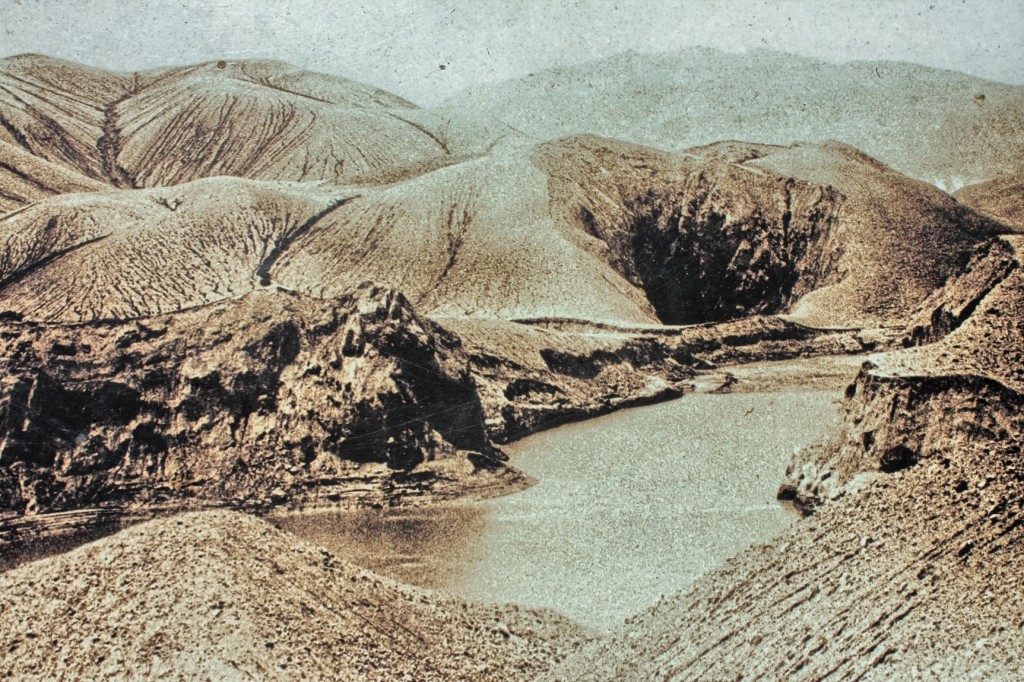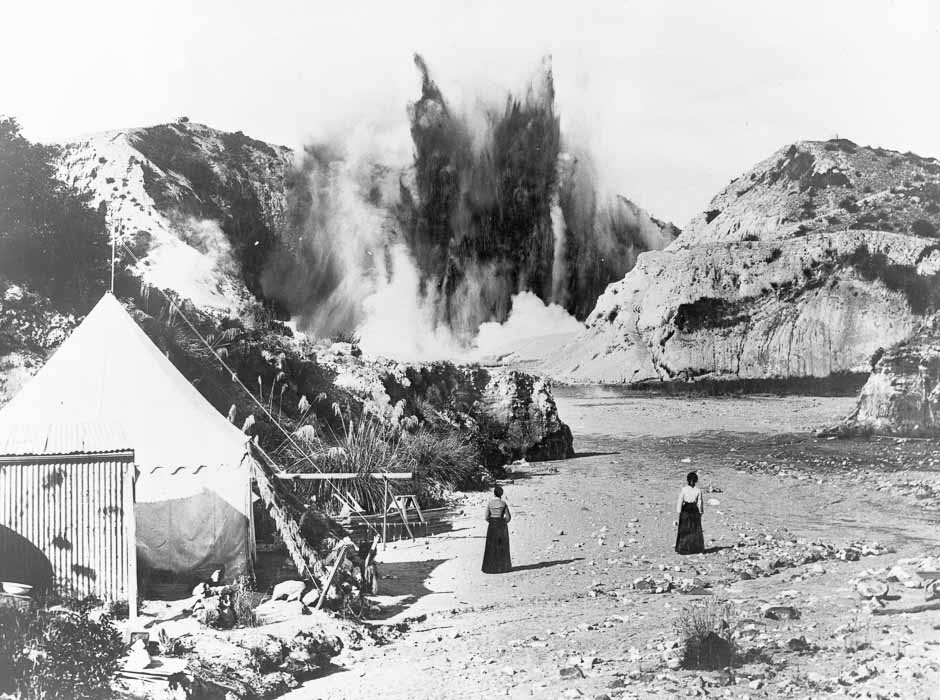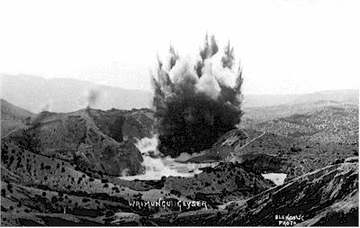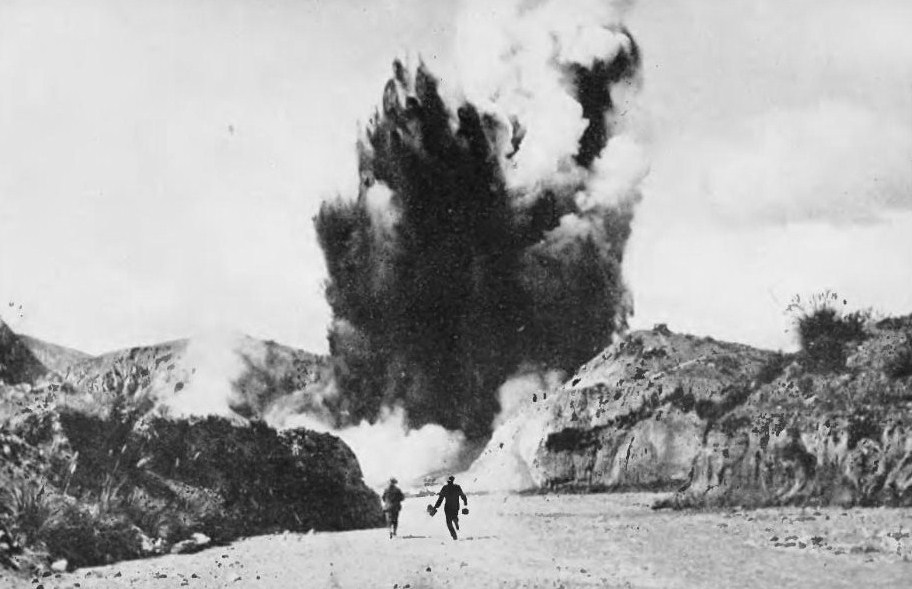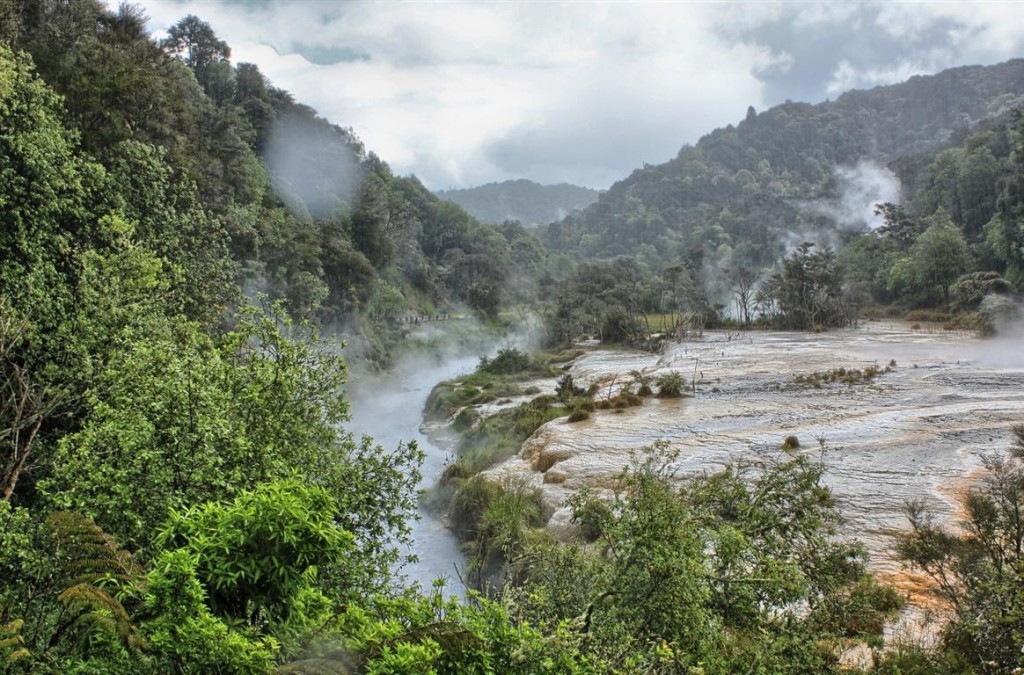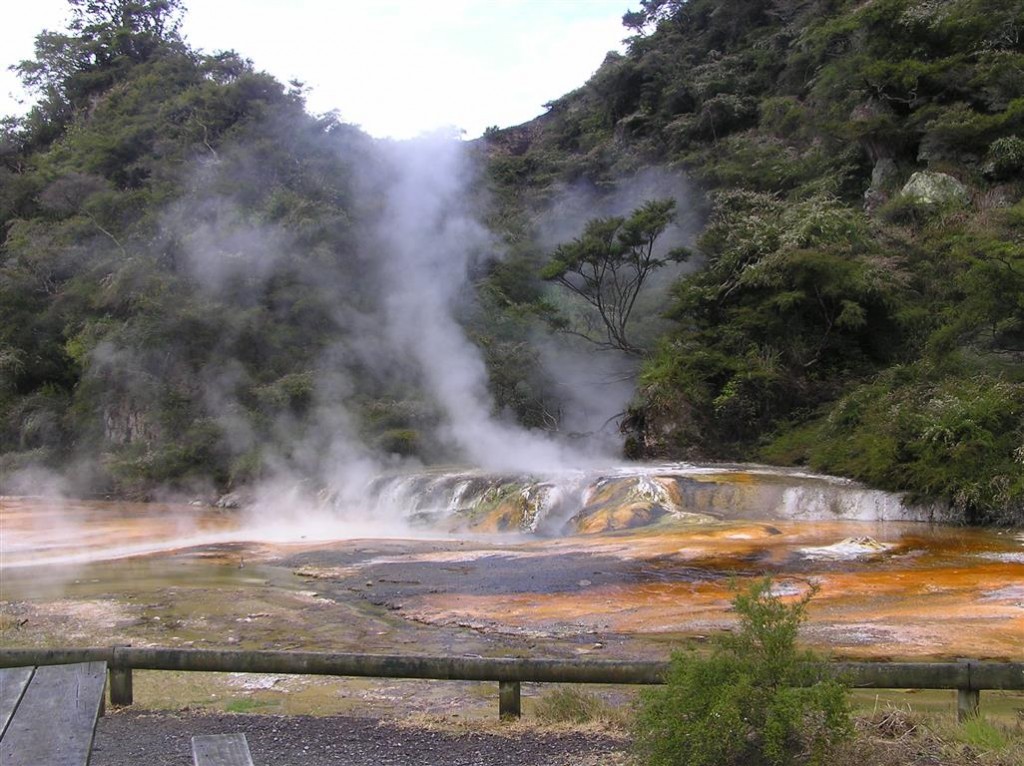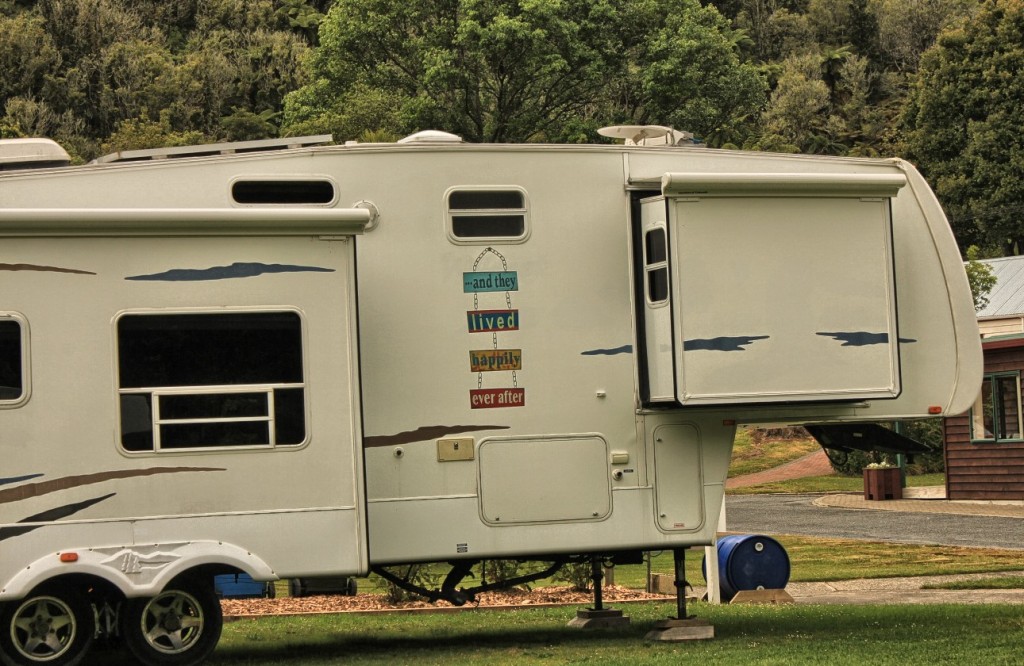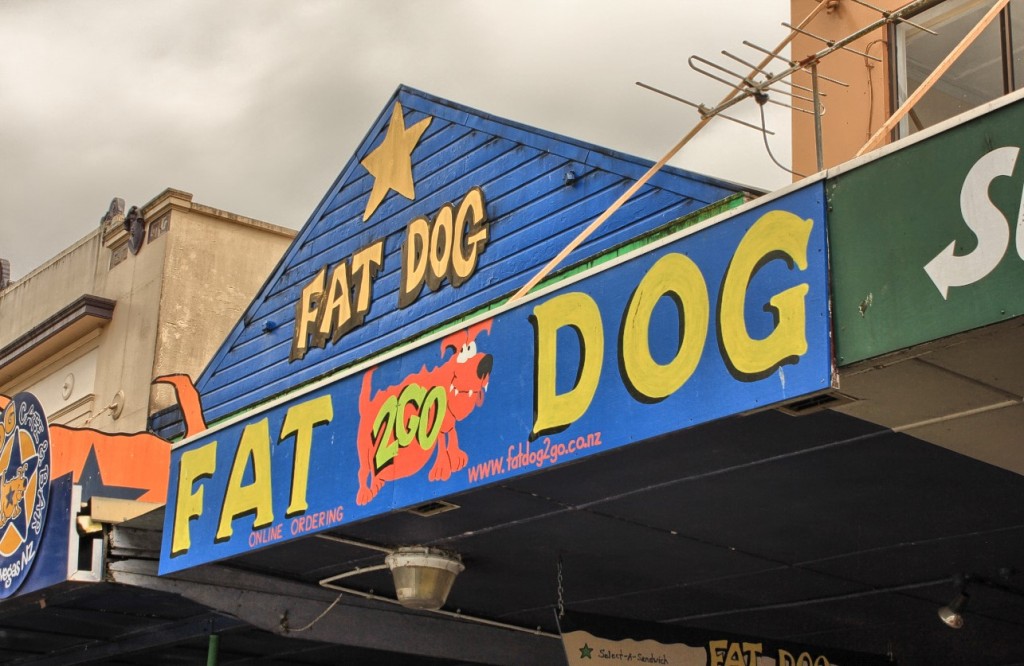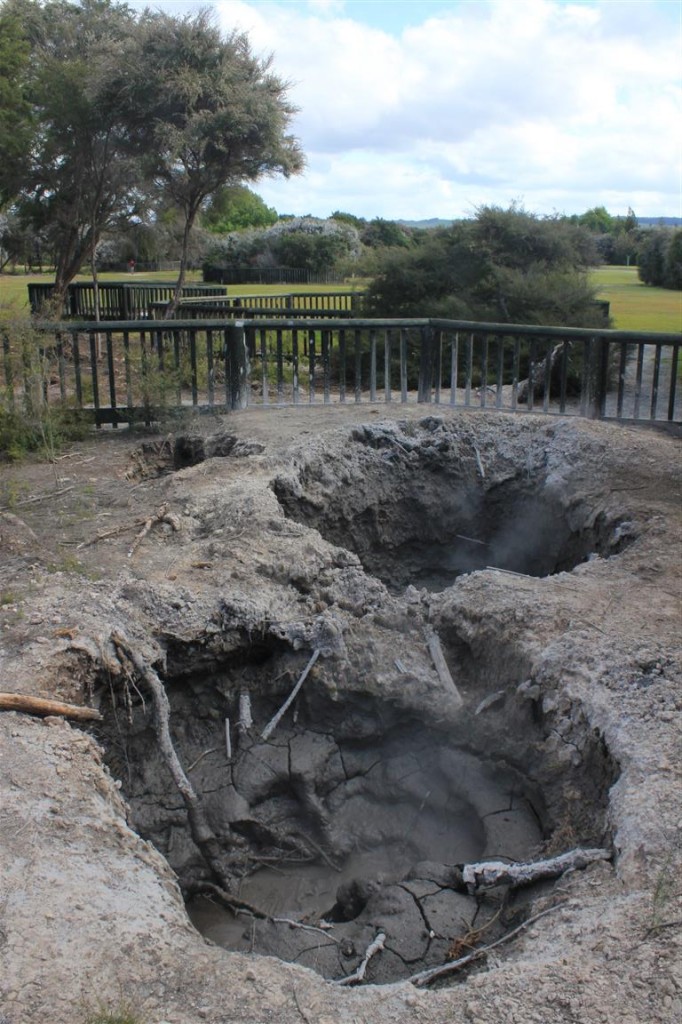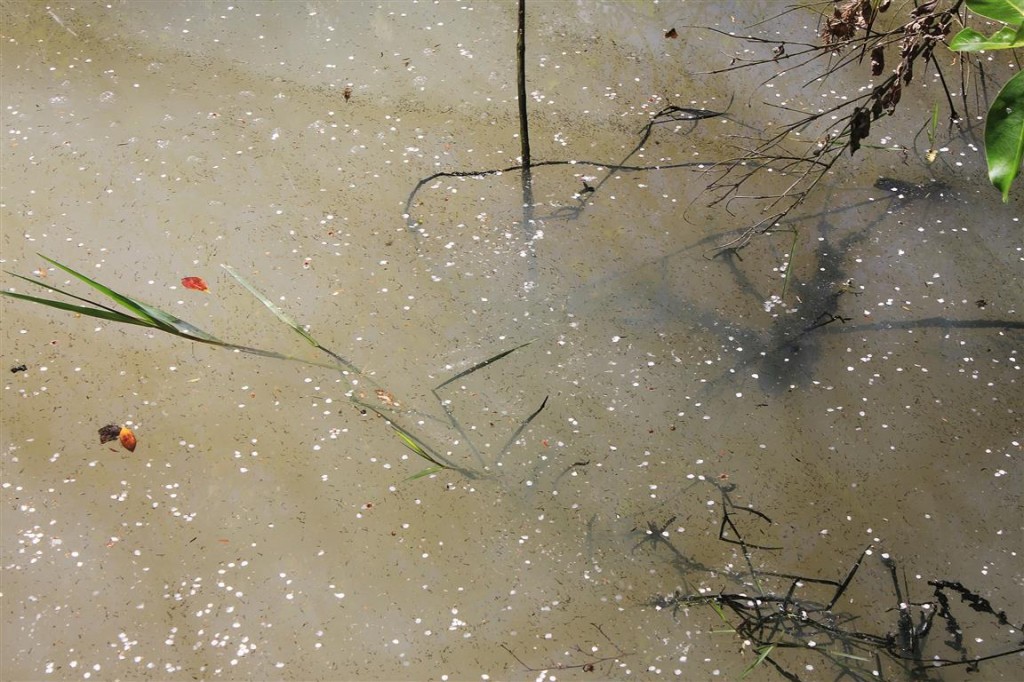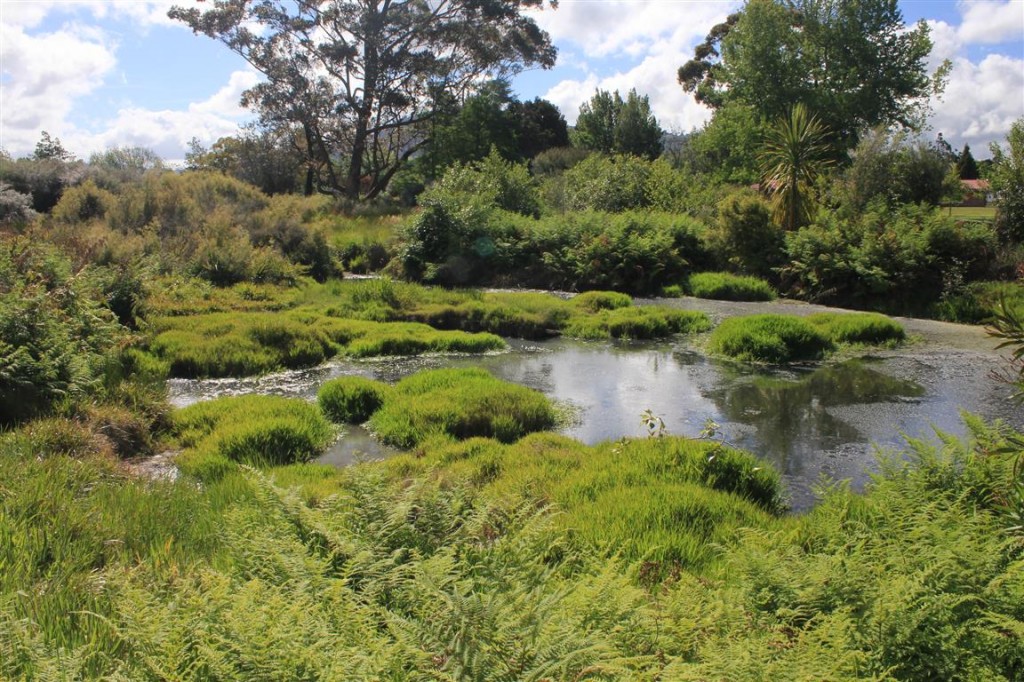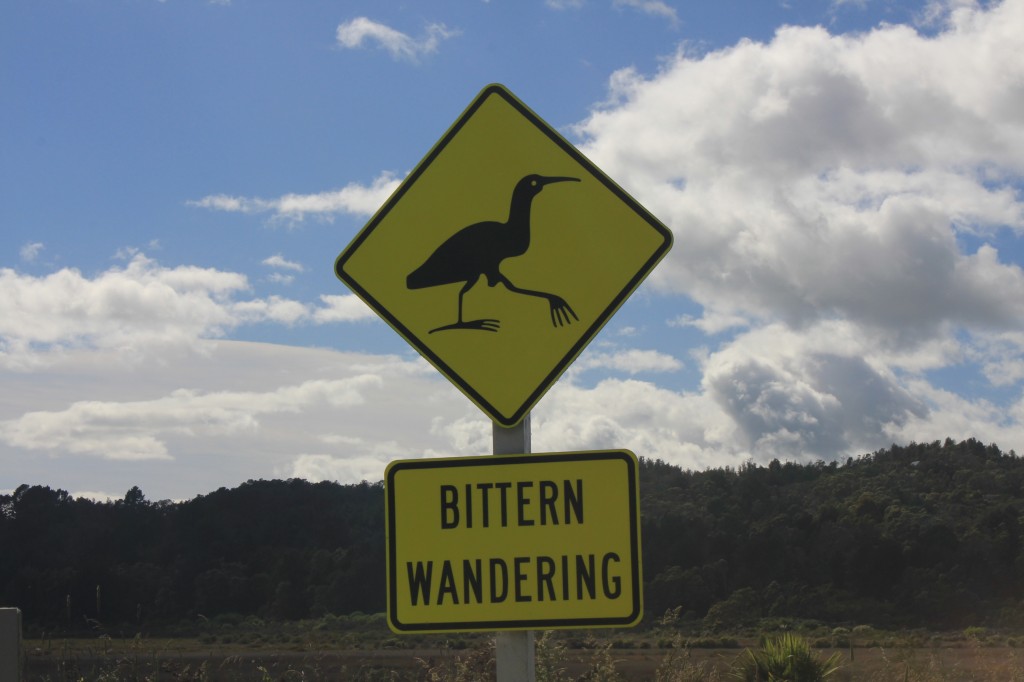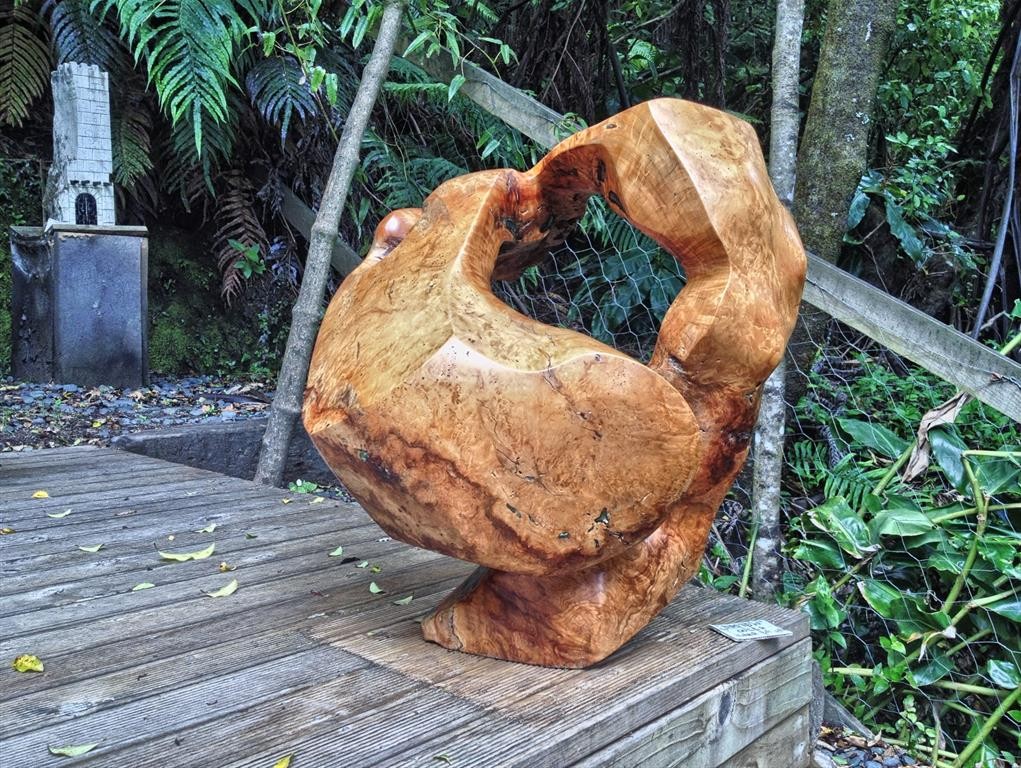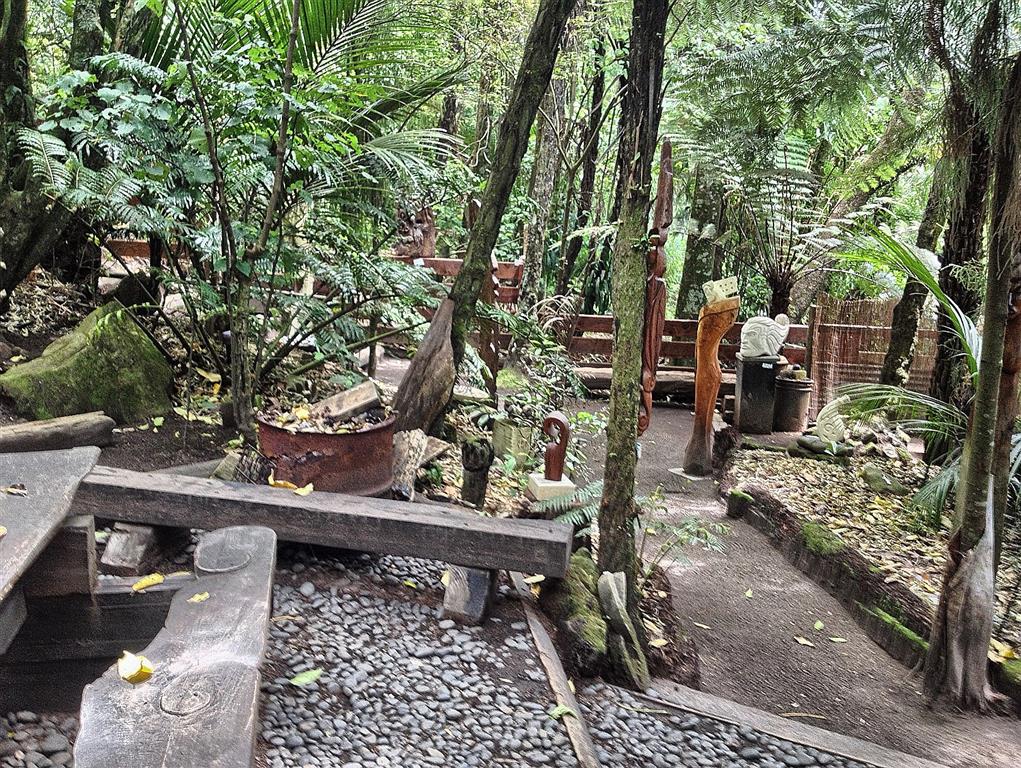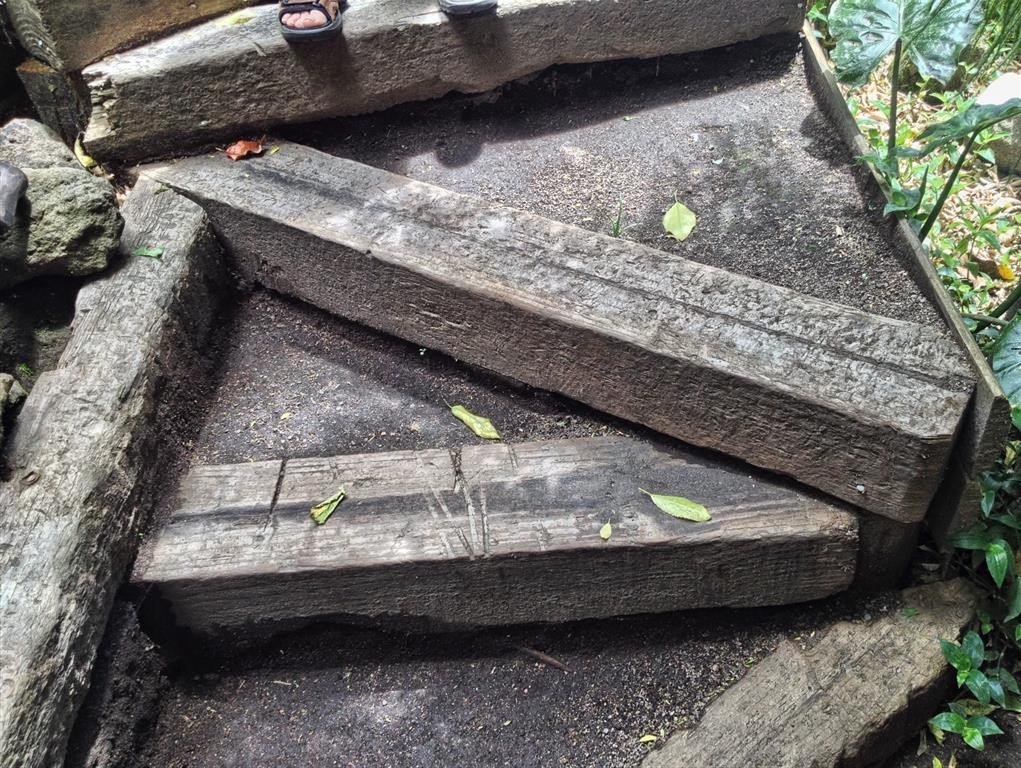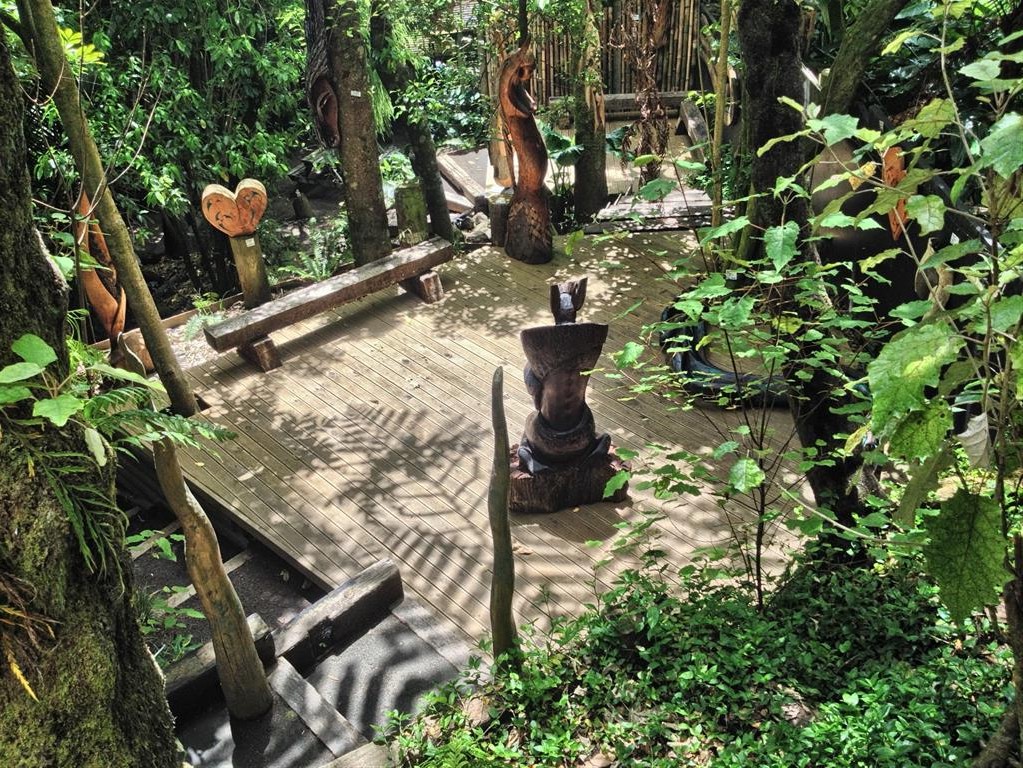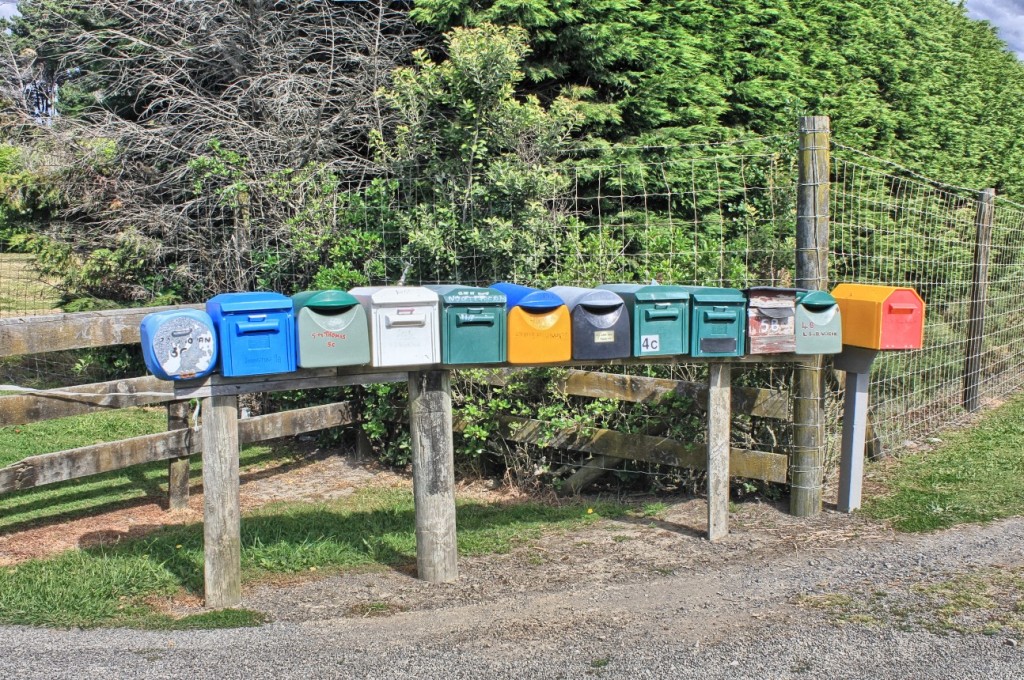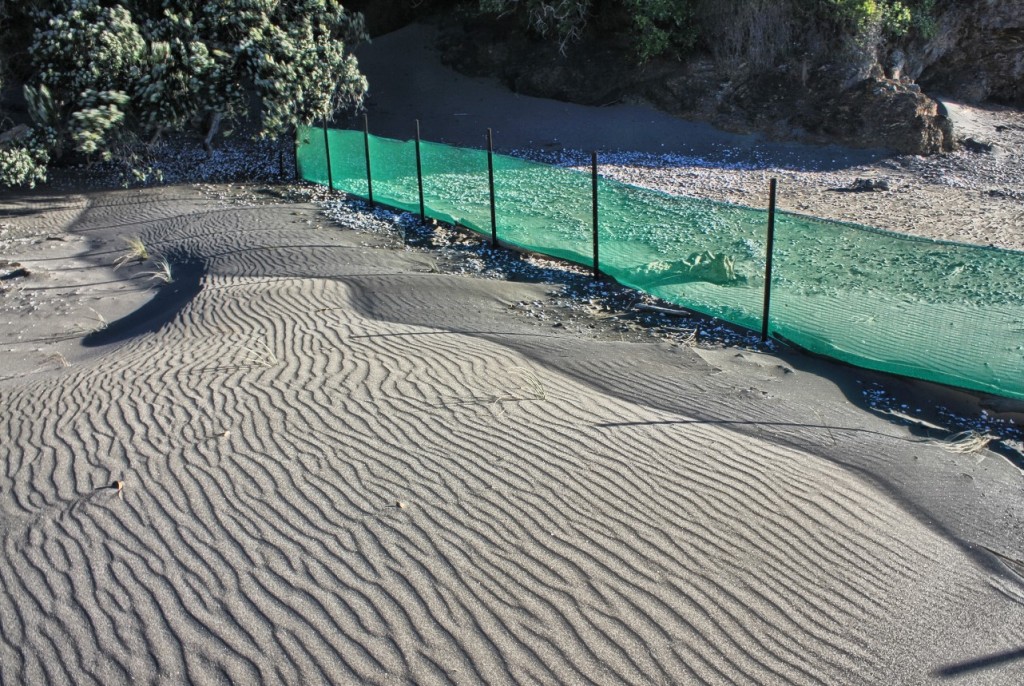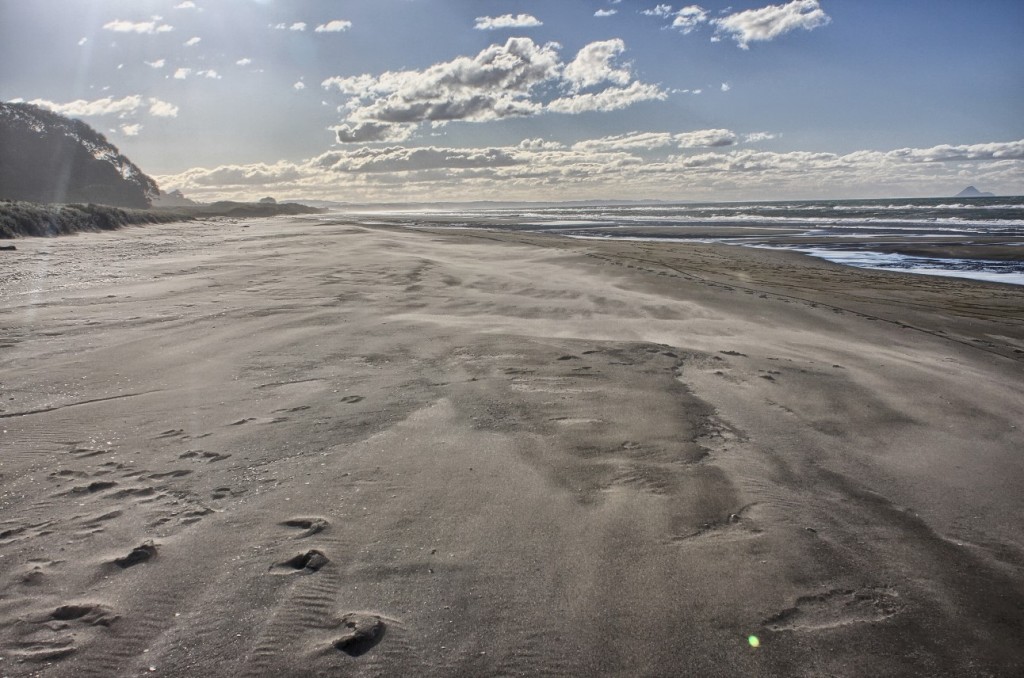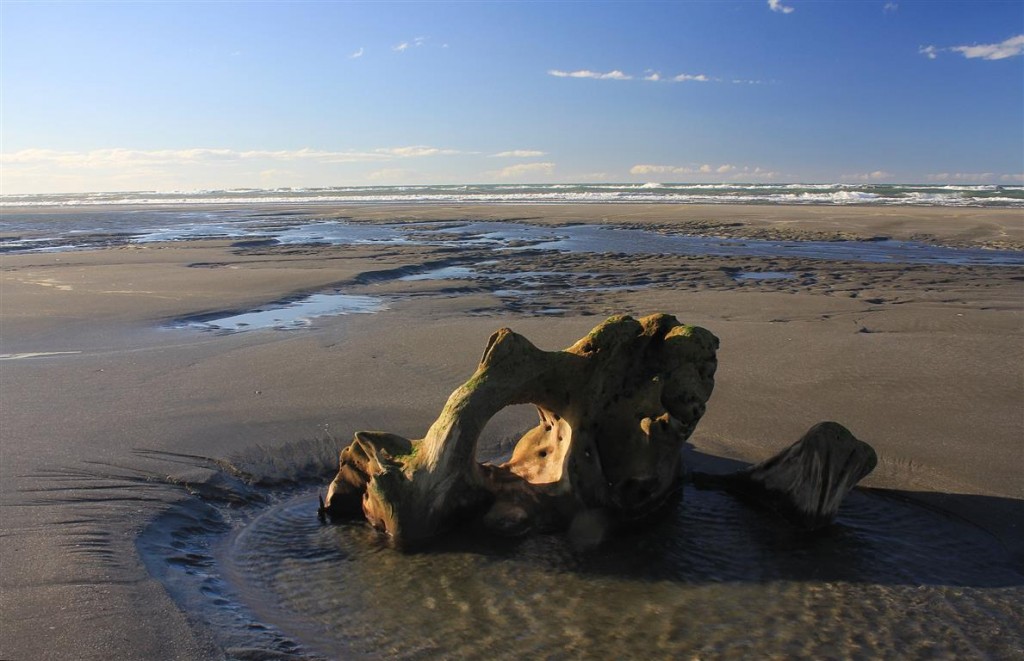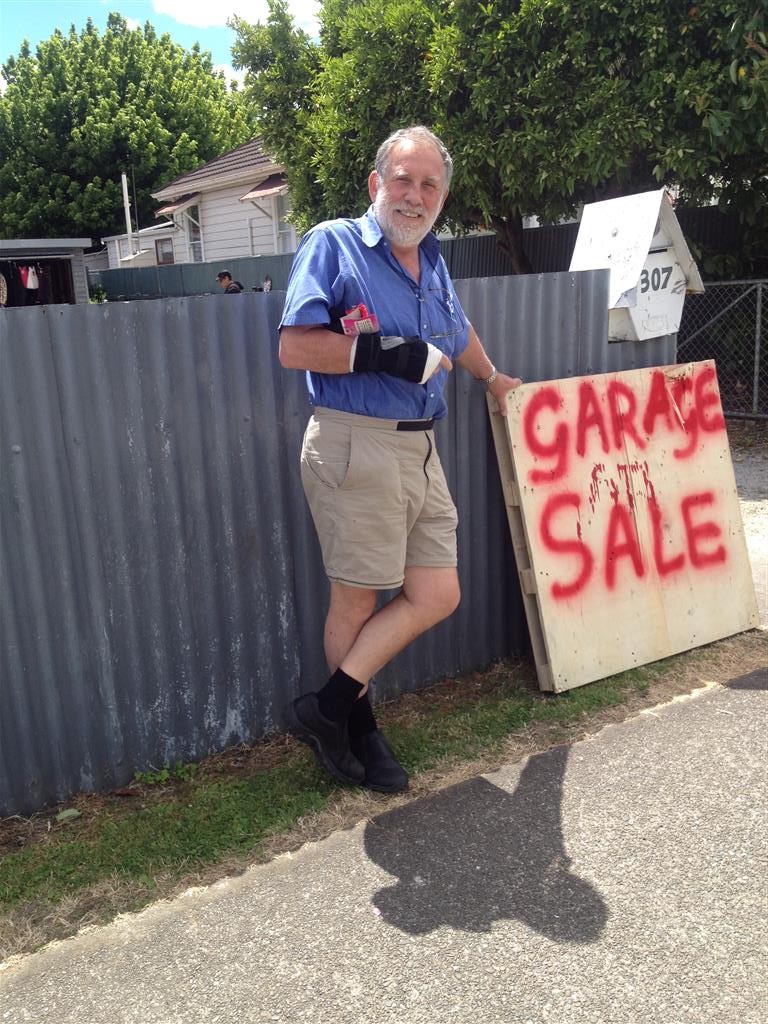We went down this valley in preference to other hot pools in the region because it’s more interesting. We’ve seen plenty of hot springs and coloured pools, but what distinguishes this area is that it is a newly formed volcanic valley with a recorded history.
Most of the NZ attractions of the volcanic variety happened a long time ago – mostly before living memory, and mostly without photos. Not so Waimangu. Here’s a valley which was a tourist attraction in the 1880’s, then blew up twice since then with massive changes to the landscape, all photographed, and today showing ongoing changes. We spent a very interesting afternoon walking through the valley floor.
Originally it was said to be the 8th wonder of the world, with fabled pink and white terraces which people traveled from all over to see.
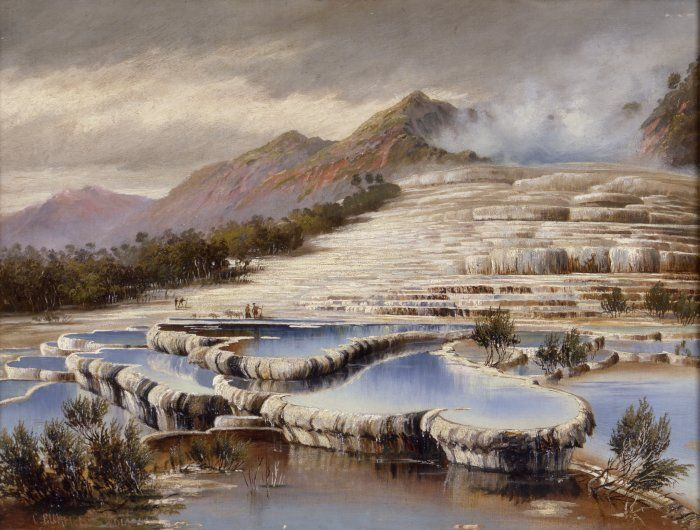
the following is copied from a guide book:
Visiting missionaries and European traders were stunned by the Pink and White Terraces. Word spread, so that growing numbers of visitors began to make the long trip to see these magnificent natural structures for themselves.
New Zealand’s first tourist attraction
The Pink and White Terraces became New Zealand’s most famous tourist attraction. Visitors from England, Australia, Canada and Europe braved a ship passage of several months, followed by an overland trip of 150 kilometres to make the pilgrimage to Lake Rotomahana.
Maori villagers living nearby benefited from revenue obtained from their services as guides and boatmen in the burgeoning tourist trade. Visitors were entertained with dancing and singing.

All this changed during the night of 10 June 1886. Already rumblings in the ground, earthquakes, creeks emptying and refilling, lake water levels rising and falling, were indications of strange happenings. Moreover, a few weeks earlier a group of Europeans and their Maori guides had seen a canoe appear in the distance on the lake. They watched the canoe approach until it suddenly vanished before their eyes. Everyone agreed on what they had seen, but to the Maori it was an apparition, an omen of danger and death. This night was to confirm their predictions of disaster.
The eruption opend up a line of craters from the northern end of the mountain. Seven small villages were destroyed. Many human lives were lost. All plant, animal and bird life was destroyed. Lake Rotomahana exploded to 20 times its size, with a new water level 40 metres higher than previously. Tragically the fabled Pink and White Terraces were gone, presumably destroyed.
Pink and White Terraces rediscovered in 2011
In February 2011 a team of researchers came to Waimangu Volcanic Valley armed with seismic surveys and sonar equipment to help them map Lake Rotomahana’s floor, hoping as a bonus to discover the whereabouts of the destroyed Pink and White Terraces.
Their luck was in. They first discovered part of the Pink Terraces and in June 2011, coinciding with the 125th anniversary of Mt Tarawera eruption, they announced the discovery of a section of the White Terraces.
In March 2012 scientists continued to probe the bed of Lake Rotomahana and further confirmed that about three quarters of the Pink Terraces remain intact. The fate of the White Terraces is less certain, having been situated in part of the lake significantly disturbed by the Mount Tarawera eruption.
It is unlikely we will see the Eight Wonder of the World again. The Terraces remain hidden 60 metres below the lake surface and caked in 2 metres of mud.
In fact since this discovery was published another paper credibly suggests that the terraces discovered on this expedition were not the recent ones, but much older terraces, suggesting previous cycles of eruption.
Here’s a picture I took at about the same place as the older one to show the destruction of the 1886 eruption:
